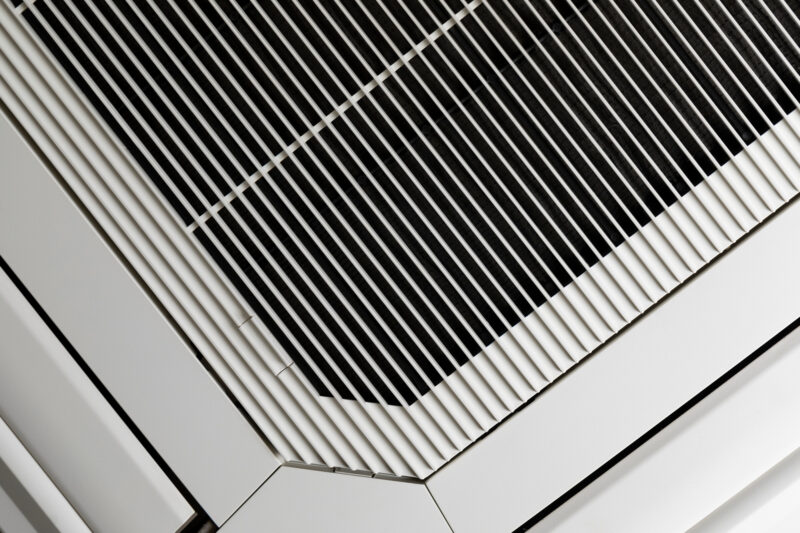The need for energy efficiency is more important than ever, especially for commercial and industrial buildings. So, it is not surprising that with rising energy costs and growing environmental concerns, more businesses are looking for smart ways to reduce their energy consumption.
There are many opportunities to do so, but one popular solution is industrial roof ventilation. This system is designed to help regulate the temperature and airflow in buildings, which can lead to significant energy savings.
But how exactly does it work? And by how much can industrial roof ventilation improve your building’s energy efficiency?
This post will answer both of these questions and more. Hopefully, it will help you determine whether it will be a smart investment for your building.

What is Industrial Roof Ventilation?
Industrial roof ventilation is a system installed on the roof of a building that allows hot air and moisture to escape while drawing in cooler air from outside.
The process helps regulate the building’s internal temperature, which makes it easier to maintain a comfortable and consistent environment. By improving airflow around the floorplan and reducing its reliance on air conditioning systems, roof ventilation can significantly lower a company’s energy consumption and costs.
These systems, such as Airocle’s industrial roof ventilation systems, are particularly beneficial for industrial buildings, warehouses, and large commercial properties where achieving temperature regulation and airflow can be challenging.
How Roof Ventilation Systems Save Energy
In case you are wondering, there are several ways industrial roof ventilation can contribute to energy savings in your building. They include the following:
1. Reduces the Need for Air Conditioning
Air conditioning systems are one of the biggest energy consumers in a building, especially in hot climates. In Australia, some reports have suggested that small businesses spend between $5,000 and $20,000 annually on electricity, depending on their business type, location, and energy usage patterns.
However, by installing roof ventilation, hot air can be vented outside. This means that cooler air is allowed to enter, which reduces the load on air conditioning units because the building’s temperature is naturally regulated.
2. Improves Airflow and Indoor Air Quality
Aside from regulating temperature, a proper roof ventilation system also improves airflow. This means stale air is replaced with fresh air from outside, which helps reduce humidity and the buildup of pollutants inside the building.

Tip: Better airflow contributes to a significantly more comfortable working environment and can even reduce the strain on HVAC systems. As a result, this can lead to fewer breakdowns and the need for less maintenance over time.
3. Helps with Building Insulation
When hot air is trapped inside a building, it can affect the insulation and lead to uncomfortable temperatures. However, an industrial roof ventilation system helps to remove this trapped heat. Therefore, it keeps the building cooler and prevents excess heat from being absorbed by the walls.
With better insulation, the need for constant cooling or heating is reduced.
4. Passive Ventilation Reduces Reliance on Mechanical Systems
Passive ventilation, which involves the natural movement of air, reduces the reliance on mechanical systems like air conditioners and fans.
Roof ventilation harnesses this principle by using natural airflow to keep temperatures comfortable inside the building. This reduces the need for additional energy consumption while supporting green building practices.
5. Regulates Temperature Throughout the Year
You might not realise this, but industrial roof ventilation systems not only help during the hot summer months but also regulate temperature during the cooler months.

Note: If you run the heating in the winter months, it can build up excess moisture in your roof. This could result in mold growth and reduced indoor air quality.
However, by facilitating better temperature regulation all year round, buildings with a roof ventilation system can save energy on both their heating and cooling needs.

Benefits of Energy-Efficient Commercial Buildings
The great thing about implementing energy-efficient solutions, such as industrial roof ventilation, is that they can offer businesses several benefits beyond lower energy bills.
Here are some advantages to making your commercial building more energy-efficient that you might not be aware of:
Cost Savings
Energy-efficient systems, like roof ventilation, can significantly reduce the overall energy consumption of your building. Over time, this translates into major cost savings, particularly if they are combined with other green building practices such as better insulation or energy-efficient lighting.
Enhanced Sustainability
Given the increasing focus being placed on environmental sustainability within business, companies that operate out of energy-efficient buildings go a long way towards reducing their carbon footprint.
Increased Property Value

Note: Energy-efficient buildings are becoming more attractive to buyers or tenants, especially those who are committed to following sustainable practices.
Subsequently, having industrial roof ventilation, and for that matter solar water heaters, can be a notable feature that makes your property stand out in the market. It could even potentially increase its value.
Better Comfort for Employees
Energy-efficient buildings undoubtedly provide a more comfortable and consistent indoor environment for employees.
With improved temperature regulation and better air quality, workers are more likely to feel comfortable and productive. This, in turn, should lead to them enjoying a better overall work experience.
The Role of HVAC Systems in Energy Efficiency
HVAC (Heating, Ventilation, and Air Conditioning) systems are often relied upon to maintain a good level of comfort inside buildings. However, while these systems are effective, they can be costly to run, especially in large industrial or commercial spaces.
Thankfully, integrating roof ventilation into your building can reduce the load on HVAC systems. At the same time, it can extend their lifespan and lower the need and cost of maintenance.

Tip: In addition to reducing energy consumption, creating a better airflow can also prevent HVAC units from overheating. This allows them to operate more efficiently and contributes to the overall energy savings in your building.














